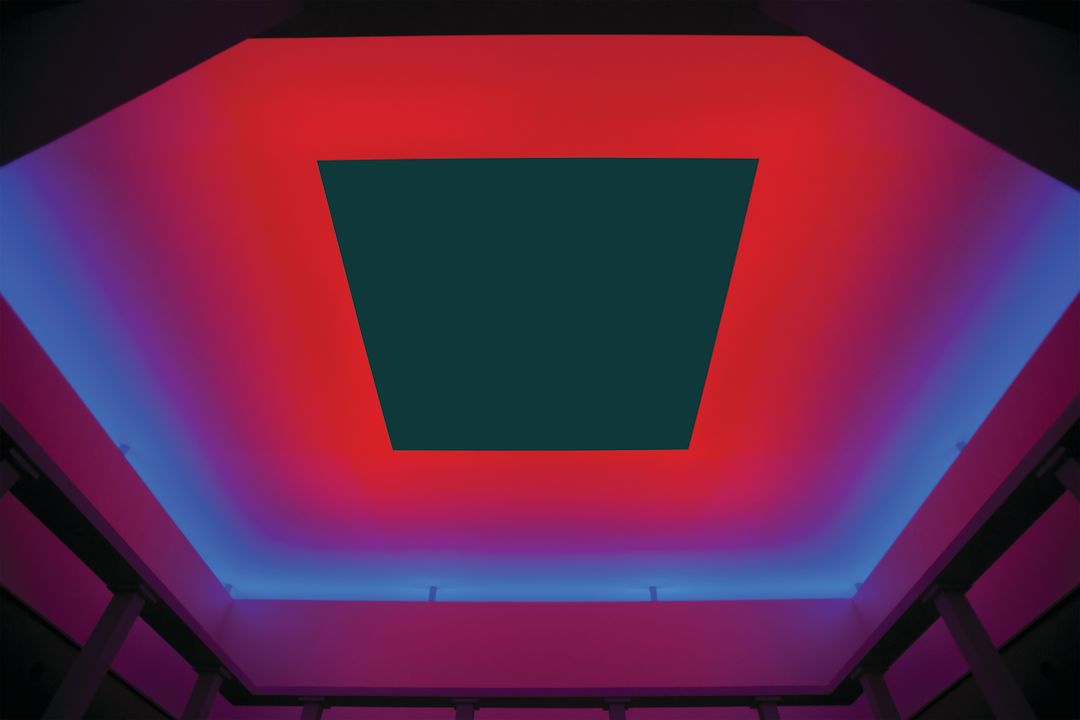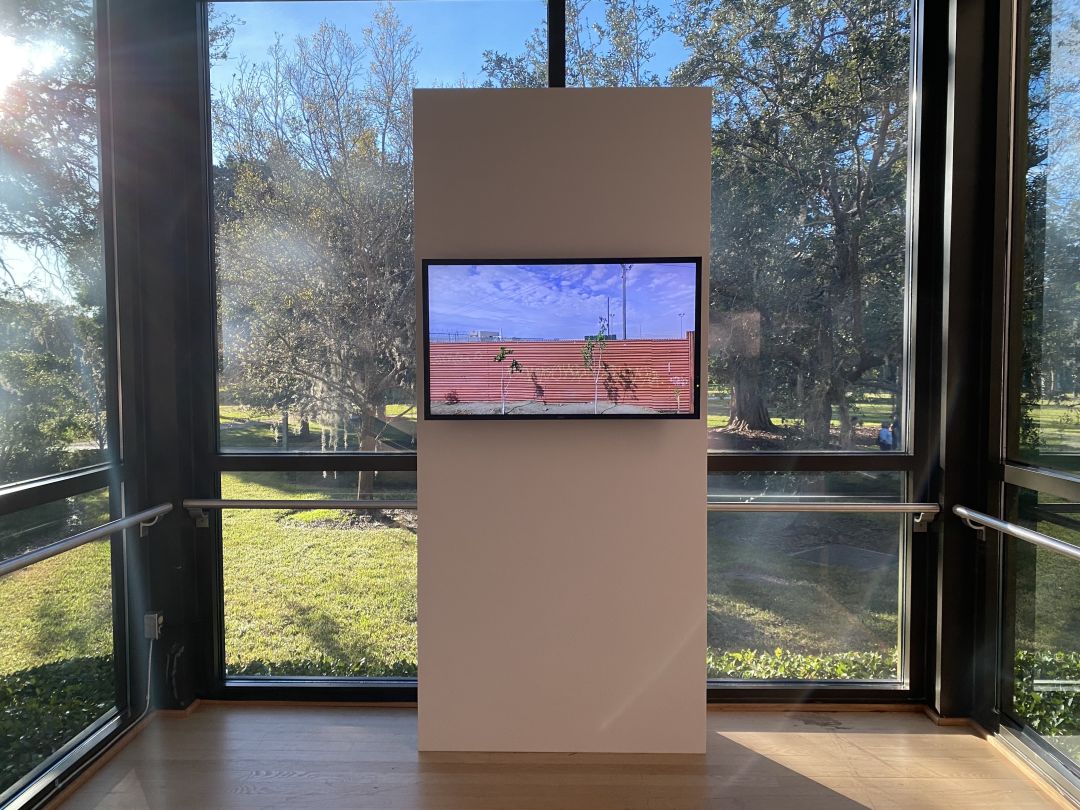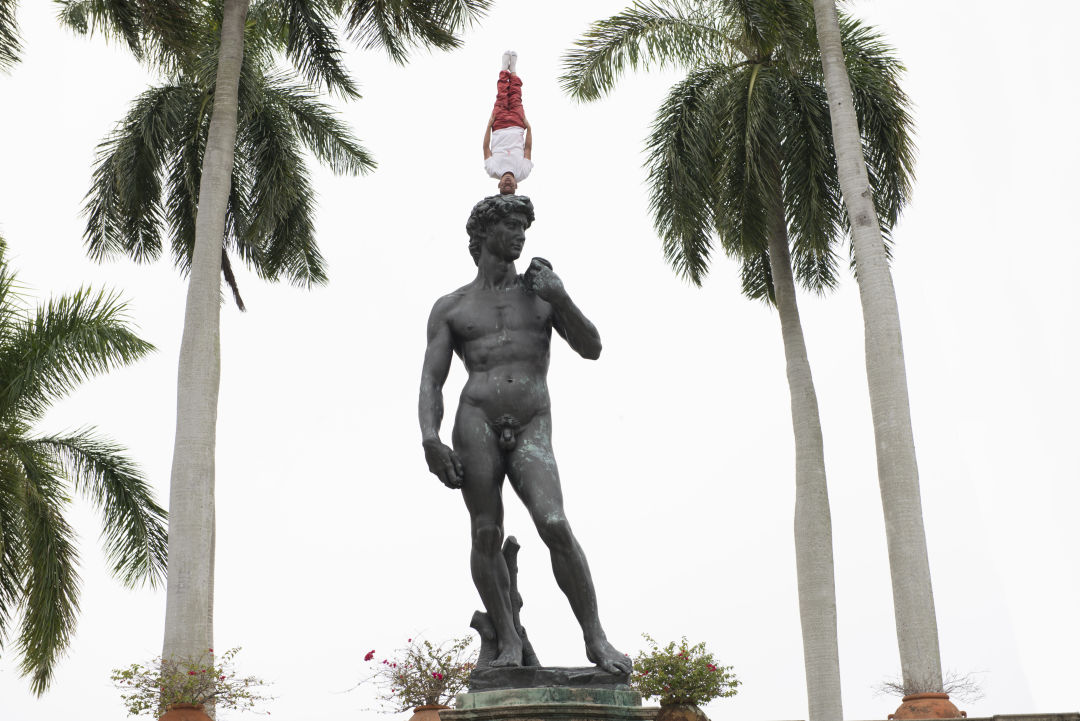The Ringling's New Exhibit Highlights a Decade of Collecting

James Turrell's Skyspace Joseph’s Coat is a permanent installation at the Ringling Museum.
Before moving to Sarasota, it had been a long while since I’d lived within a reasonable distance of an art museum. When I was considering moving here, my in-laws sent me off to The Ringling, where I discovered its James Turrell Skyspace, Joseph’s Coat. I've visited two other Skyspaces by Turrell—one in San Francisco and one in Jerusalem; they provide a moment of quiet, of perceptual disorder that combines with an expansive feeling. I was surprised that there was one here in Sarasota. When I heard there was, I thought, “I could live here.”
I love art. All of it. The awe-inducing, the good and what some people might call the bad and the ugly.
The Ringling's Skyspace sits within an inner courtyard of the Museum of Art’s northwest wing. Walking into the space, it looks like any courtyard might, with greenery climbing the walls, benches flanking all four sides and a roof with a 24-foot aperture in it. The best time to view Joseph's Coat is at sunset, as the sky changes. LED lights slowly shift from one color to the next against the roof, changing the perception of the sky’s color as it changes from day to night. It’s worth a special venture to the museum just to experience it.
Joseph's Coat is featured in the current exhibit A Decade of Collecting, which showcases some of the pieces the museum has recently been able to acquire. More than 12,500 works have been added to the collection in the past 11 years, with Turrell’s Skyspace being the largest and most expensive piece acquired in that time.
One thing that’s immediately noticeable in A Decade of Collecting—situated in the northwest wing of the art museum—is how much contemporary art is on display. It’s mixed in with older objects, like a 17th century glass Roemer goblet (a similar one is in the Met in New York).

A look at how various pieces of the museum's collection have been situated with intention in A Decade of Collecting.
Image: Bethany Ritz
Many older art institutions can suffer an identity crisis when attempting to remain relevant. But at The Ringling, A Decade of Collecting reveals a foundational impulse to kick up the dust and keep the place feeling current and energized.
The show’s curator and director of the museum, Steven High, walks me through the show. He talks about the show in a thoughtful, quiet voice; careful to acknowledge not only the donors who helped the collection grow, but also the curators responsible for filling it out with decisive acquisitions.
High notes that his career has always been focused on contemporary art and that he was hired to build a contemporary collection at The Ringling. I ask him for advice for how best to approach this kind of work.
"Don’t feel like you have to say something is good or bad, or that you have to have an opinion. Just look, just use your eyes,” he says.
If at first glance the show seems like a grab bag of art through time, the overall sense of the exhibit feels intentional. "When we laid this out, it was really about trying to find works that would connect," says High. "Every gallery has a different kind of feel to it."
Some pieces give a nod to the history of the circus and the European sensibilities of John and Mable Ringling. But what’s most striking is how expansive and inclusive this museum has become.
"We're not a two-dimensional institution. We work in a lot of different areas," says High, which reminds me of what Elizabeth Doud is doing with the museum's performance series offerings, as well—she brings the best of the best from around the world with an eye for diversity in form and culture.
“We want to show a commitment to diversifying not only our board and staff, we want to diversify the collections,” High says. To that end, the museum purchases a piece from each of its contemporary exhibitions.
High approaches a large, pixelated image, lit from behind, by Iranian artist Mohsen Azar. He says, “This is a piece we just bought that was in the Metadata show. It's an image of Eric Garner that was downloaded from the web, and uploaded, downloaded, thousands of times. Every download, every upload, you lose a bit of the resolution of the image, to the point it that becomes its own image. It’s still going on. This was as of March 6.”

Photo of Emilio Chapela's piece Radio Latina, a film that follows a long stretch of the border.
Image: Bethany Ritz
Some of the other work on display includes Vanessa German’s sculpture Just Do It, Emilio Chapela’s Radio Latina (a film that follows snapshots of the border) and a quilt made from circus fabrics from the 1930s—“the height of the American tent circus,” says High—by Luella York Munson.
The more we talk and walk through the galleries, the more it becomes clear that High loves each of these pieces. His voice brightens as he shares stories about individual work—he has a story about almost every single one. One is about Li Wei, a performance photographer who appears in a large photo of the statue of David in the museum’s garden. Wei is inverted, seemingly hovering upside down above the massive David statue. Where David is large and achingly wrought, Wei is light, defying gravity altogether.

Li Wei's piece Li Wei falls to David is on view in the show A Decade of Collecting.
“This is really him on top of David,” says High. “He’s suspended by a crane. That’s the only Photoshopping that happened in this image. It was a 200-foot crane, and we had two of them. He does this series where he lands or falls. He has one falling in the middle of the desert, and here he falls to David.”
The photo's title card doesn't note these details. “Everyone looks at it as a Photoshop, and that’s what I love about it. You wouldn’t know the difference," High says. "And we’re not going to give it away.”
I've been to the show three times already, the last one being on one of the free Mondays The Ringling offers. It gets better every time. I feel my own sense of time shift as I walk through the galleries. This movement through our contemporary age is expansive, open and changing—all at once—and reminds me to be so, as well, even through the shifting, sometimes disorienting yet exciting, wash of time.
A Decade of Collecting is on view through Jan. 22.



